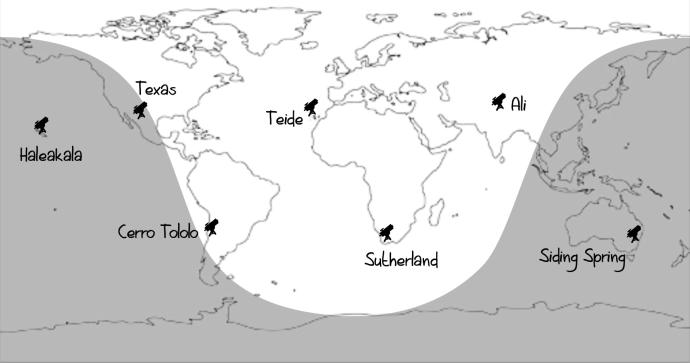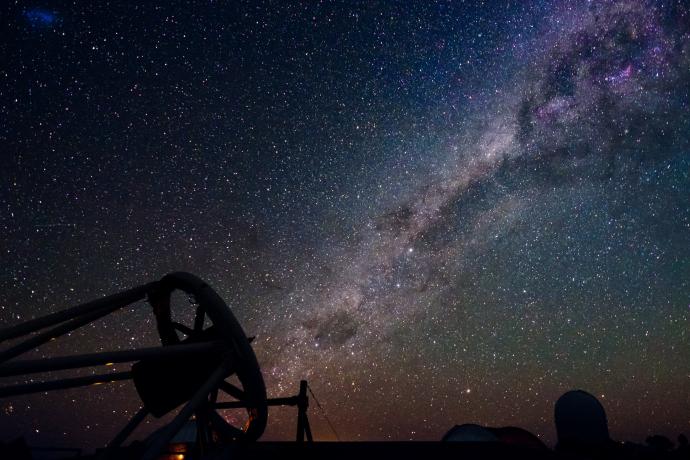The Las Cumbres Observatory (LCO) network was founded in 2005.
It has over 20 telescopes around the world. Each one is fully robotic, so people do not need to be on site. They are controlled over the internet.
Astronomers – and young people through The Schools’ Observatory – can use these telescopes. It doesn't matter where in the world you are. Anything in both the northern and southern sky can be studied.
A special computer program called a scheduler decides which telescope to use. It looks at the weather and the time of day at each site to help make the decision. Some objects can only be seen from certain places on Earth.

LCO works around the clock. When it’s daytime in one location, it will be nighttime somewhere else. Requests to the telescopes can be made anytime because the scheduler updates every 5 minutes. The data from the telescope is then checked and sent to whoever asked for it.

The network has 3 telescope sizes: 0.4-metre, 1-metre, and 2-metre diameter mirrors.
While there are lots of 0.4-metre and 1-metre telescopes, there are only 2 of the largest ones. A 2-metre telescope called Faulkes Telescope North (FTN) in Hawaii and one called Faulkes Telescope South (FTS) in Australia.


The mirrors collect light from space and send it to scientific instruments, such as cameras and spectrographs. This allows us to study the light in different ways. Bigger mirrors collect more light, letting us see fainter objects. However, a smaller mirror is better if the object is very bright, like a nearby star.
The mix of telescopes and instruments means lots of different types of objects can be studied. With telescopes all around the world, objects are easier to see, and the data can be taken more quickly.
